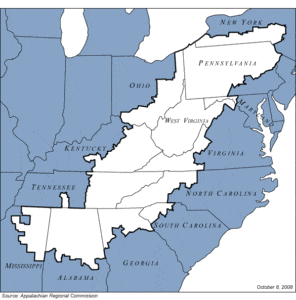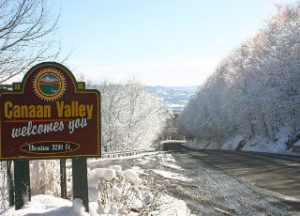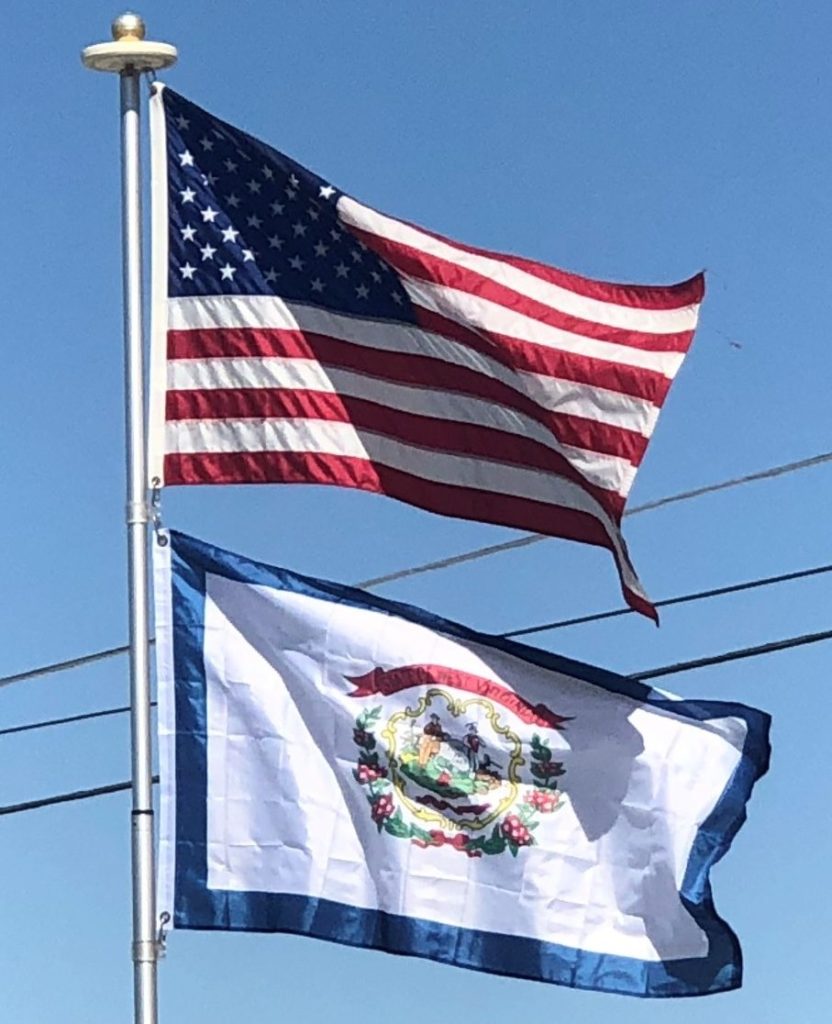
The completion of the Chesapeake and Ohio Railway (C&O) across the state to the new city of Huntington on the Ohio River in 1872 opened access to the New River Coal Field. Soon, the C&O was building its huge coal pier at Newport News, Virginia on the large harbor of Hampton Roads. Other railroads would follow.
As coal mining and related work became major employment activities in the state, there was considerable labor strife as working conditions, safety issues and economic concerns arose. Even in the 21st century, mining safety and ecological concerns is still challenging to the state whose coal continues to power electrical generating plants in many other states.
Coal is not the only valuable mineral found in West Virginia, as the state was the site of the 1928 discovery of the 34.48 carat (6.896 g) Jones Diamond.
Geography:
Located in the Appalachian Mountain range, West Virginia covers an area of 24,229.76 square miles making it the 41st-largest state in the United States
West Virginia is located entirely within the Appalachian Region, and the state is almost entirely mountainous. The elevations and ruggedness drop near large rivers like the Ohio River or Shenandoah River. About 75% of the state is within the Cumberland Plateau and Allegheny Plateau regions. Though the relief is not high, the plateau region is extremely rugged in most areas. The average elevation of West Virginia is approximately 1,500 feet above sea level, which is the highest of any U.S. state east of the Mississippi River.

On the eastern state line with Virginia, high peaks in the Monongahela National Forest region give rise to an island of colder climate and ecosystems similar to those of northern New England and eastern Canada. The highest point in the state is atop Spruce Knob, at 4,863 feet.
Economy:
Tourism:
Tourism contributed $4.27 billion to the state’s economy and employed 44,400 people in 2010, making it one of the state’s largest industries. Many tourists, especially in the eastern mountains, are drawn to the region’s notable opportunities for outdoor recreation. Canaan Valley is popular for winter sports, Seneca Rocks is one of the premier rock climbing destinations in the eastern U.S., the New River Gorge/Fayetteville area draws rock climbers as well as whitewater rafting enthusiasts, and the Monongahela National Forest is popular with hikers, backpackers, hunters, and anglers.

In addition to such outdoor recreation opportunities, the state offers a number of historic and cultural attractions. Harpers Ferry National Historical Park is a historic town situated at the confluence of the Shenandoah and Potomac rivers. Harpers Ferry was the site of John Brown’s 1859 slave revolt and raid on the US Armory and Arsenal. Located at the approximate midpoint of the Appalachian Trail, Harpers Ferry is the base of the Appalachian Trail Conservancy.
Resources:
One of the major resources in West Virginia’s economy is coal. According to the Energy Information Administration, West Virginia is a top coal-producer in the United States, second only to Wyoming. West Virginia is located in the heart of the Marcellus Shale Natural Gas Bed, which stretches from Tennessee north to New York in the middle of Appalachia.
